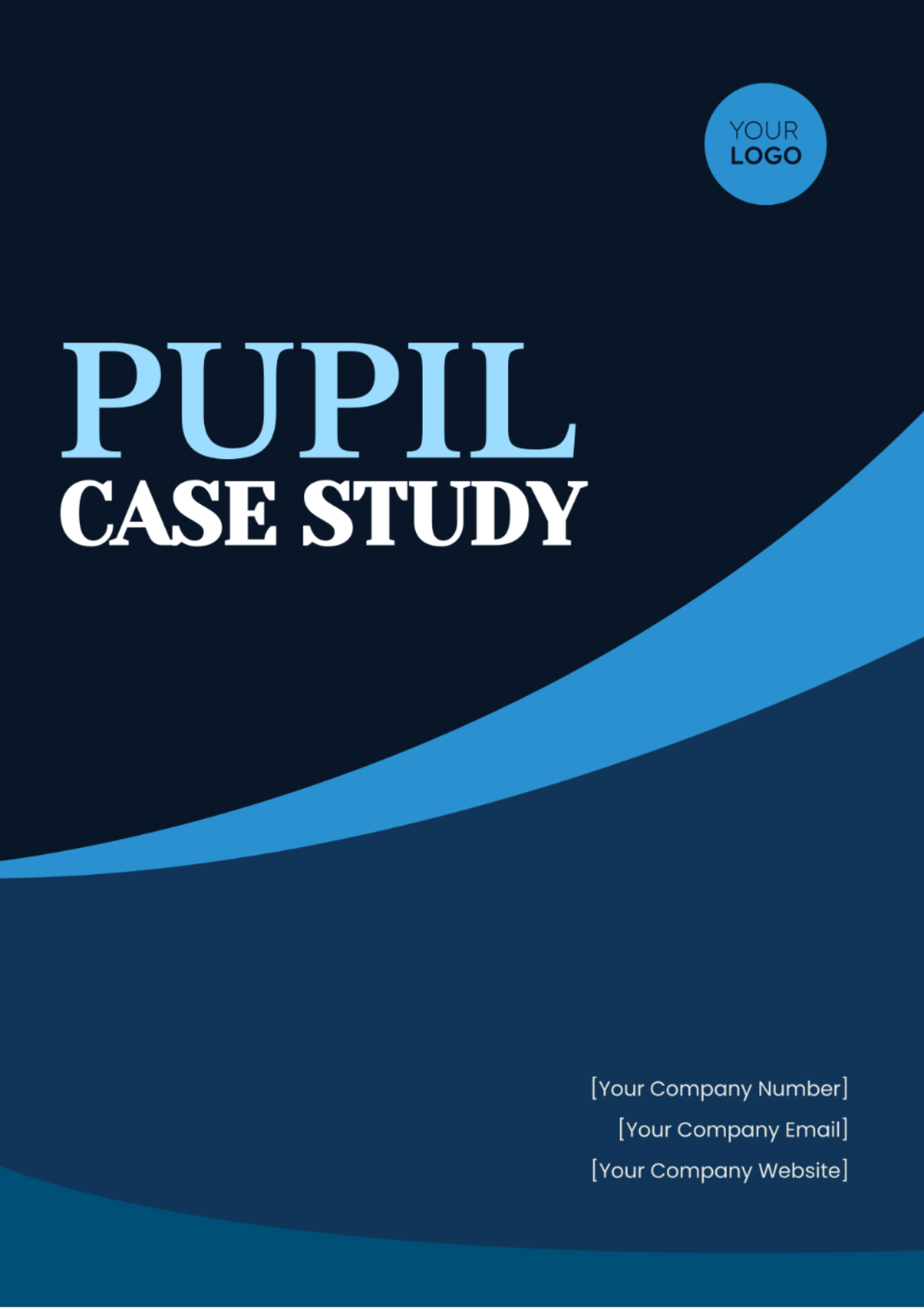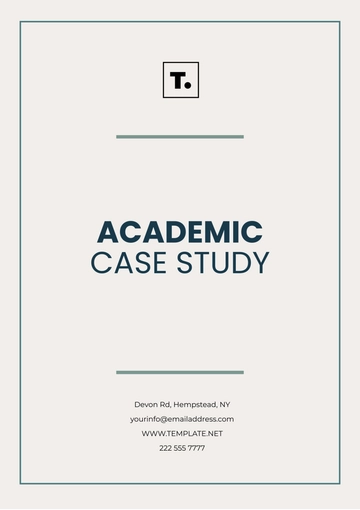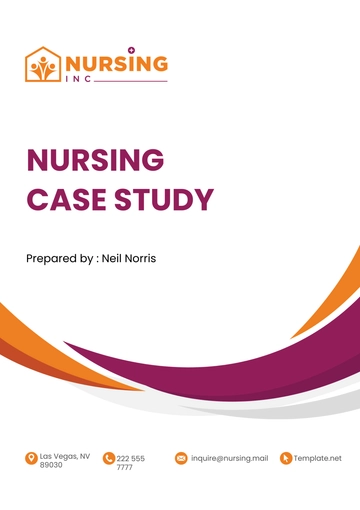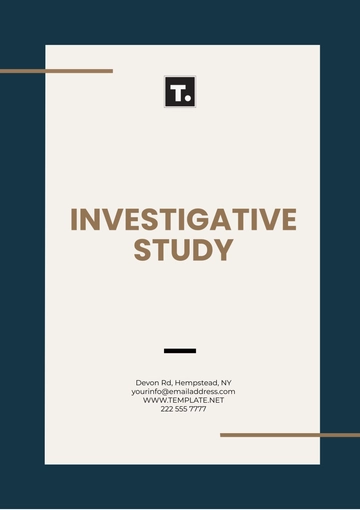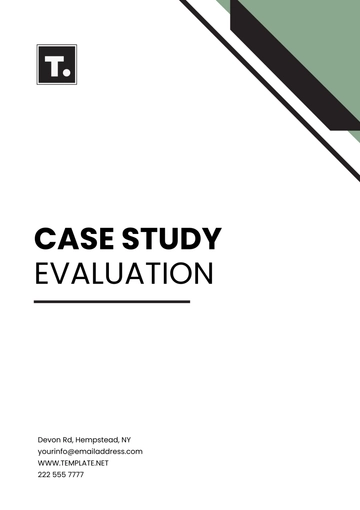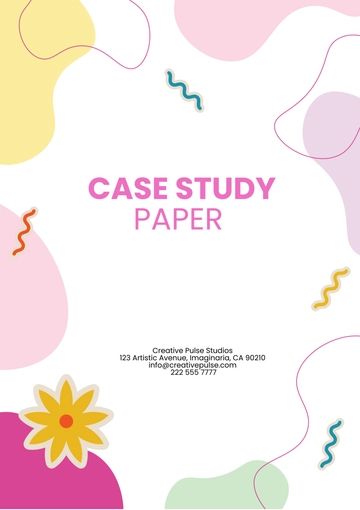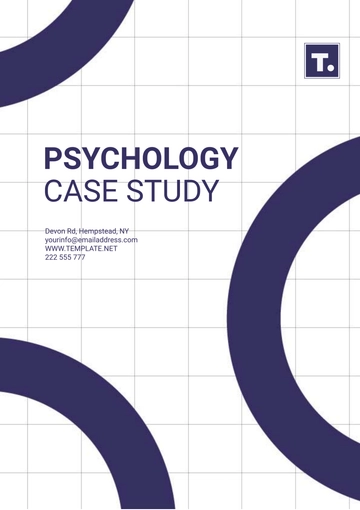Pupil Case Study
I. Introduction
In this section, provide an overview of the pupil and the purpose of the case study. Include basic information such as name, age, grade level, and any relevant background information. Describe the objectives of the case study and what you aim to achieve by conducting it.
[Student Name] is a [Age] pupil currently enrolled in [Grade Level] at [Your Company Name]. The purpose of this case study is to examine his/her academic performance, behavior, and overall development within the educational setting. By conducting this study, we aim to gain insights into his/her strengths, weaknesses, and areas for improvement, as well as to develop strategies to support his/her educational journey effectively.
II. Background Information
In this section, provide detailed background information about the pupil, including family background, medical history, previous academic performance, and any relevant assessments or evaluations. This information will provide context for understanding the pupil's current situation and needs.
Academic Performance: In previous academic years, [Student Name] has demonstrated proficiency in subjects such as mathematics, science, and history, but has shown challenges in language arts, particularly in reading comprehension.
III. Academic Assessment
In this section, provide a detailed assessment of the pupil's academic performance, including strengths, weaknesses, and areas for improvement. Use data from assessments, standardized tests, grades, and teacher observations to support your analysis.
A. Strengths:
Strong mathematical reasoning: [Student Name] consistently excels in solving complex mathematical problems and demonstrates a deep understanding of mathematical concepts. For instance, he consistently scores in the top percentile in math competitions and consistently achieves high grades in advanced math courses.
Proficient reading comprehension: [Student Name] exhibits strong reading comprehension skills by accurately summarizing and analyzing complex texts. He consistently participates in literature discussions, providing insightful interpretations and connections to the text. Additionally, his performance on standardized reading comprehension tests consistently places him above grade level.
B. Weaknesses:
Difficulty with spelling: [Student Name] struggles with spelling, often misspelling common words and making errors in written assignments. For example, in recent spelling quizzes, he consistently misspelled words such as "necessary" and "accommodate," indicating a need for targeted spelling instruction and practice.
Poor organizational skills: [Student Name] frequently struggles with organization, leading to missed deadlines and incomplete assignments. For instance, he often forgets to bring the necessary materials to class and has difficulty keeping track of homework assignments and due dates.
C. Areas for Improvement:
Spelling improvement: Implement a structured spelling program tailored to [Student Name]'s needs, focusing on commonly misspelled words and providing regular practice opportunities. Additionally, encourage the use of mnemonic devices and word games to reinforce spelling skills outside of the classroom.
Organizational strategies: Teach [Student Name] organizational strategies such as using a planner or digital calendar to track assignments and due dates. Provide explicit instruction on breaking down tasks into manageable steps and setting realistic goals to improve time management skills. Consider providing visual aids or checklists to help him/her stay organized and focused during class and homework.
Additional support: Offer additional support through one-on-one
meetings with a learning support specialist or academic counselor to address specific academic concerns and develop personalized strategies for success. Collaborate with [Student Name]'s parents to reinforce strategies and monitor progress both at home and at school. Additionally, consider providing accommodations such as extended time on assignments or preferential seating to support his/her academic growth.
IV. Behavioral Assessment
In this section, analyze the pupil's behavior within the educational setting, including classroom behavior, social interactions, and emotional well-being. Use observations, behavior logs, and input from teachers and counselors to assess the pupil's behavior.
A. Classroom Behavior
[Student Name] usually behaves well and participates actively in class. Though mostly attentive, he/she can sometimes get distracted, especially during less interesting lessons. He/she regularly obeys class rules but sometimes finds it hard to stay focused on longer or harder tasks.
There have been occasional instances of disruptive behavior, such as talking out of turn or fidgeting, which may disrupt the flow of the lesson. Additionally, [Student Name] has shown difficulty in transitioning between activities, sometimes requiring extra reminders or redirection to stay on track.
B. Social Interactions
[Student Name] socializes well in school, showing good manners, initiates chats, and works well in groups, but may lack assertiveness and struggle to voice opinions or seek help.
C. Emotional Well-being
Promote [Student Name]'s well-being with mindfulness exercises, an inclusive class environment, regular check-ins, and counseling or support groups.
V. Conclusion
Summarize the key findings of the case study and provide recommendations for supporting the pupil's academic and personal development. Highlight the importance of collaboration between stakeholders, such as teachers, parents, and support staff, in implementing strategies to address the pupil's needs effectively.
In conclusion, this case study has provided valuable insights into [Student Name]'s academic performance, behavior, and overall development. By implementing targeted interventions and support strategies, we can ensure his/her continued growth and success in his/her educational journey. Collaboration between teachers, parents, counselors, etc. will be essential in implementing these recommendations and providing the necessary support for [Student Name]'s success.
Prepared By:
[Your Name]
Case Study Templates @ Template.net
